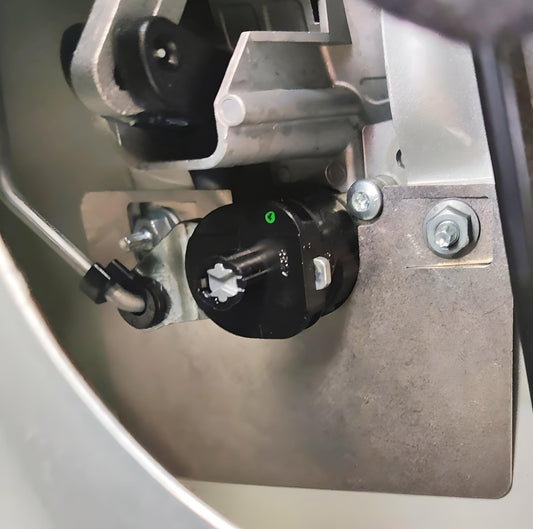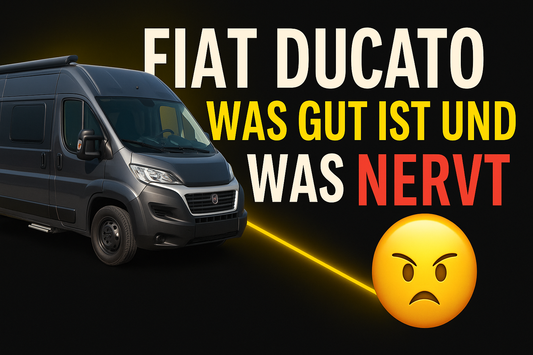During the installation of the Prickstop security plates, I also upgraded the speakers. Our Peugeot Boxer came with a factory navigation radio and reversing camera—so not the cheapest version—but the sound was still disappointing: the factory Fiat/Peugeot speakers are very weak.
Choosing New Speakers
I wanted a preconfigured set of 16 cm woofers and tweeters to replace everything at once. On the market there are several sets, including from ETON and Rockford Fosgate.
- ETON UGFIAT-F2.2 (affiliate link, 3 Ohm): These speakers are specifically designed for the Fiat Ducato/Peugeot Boxer. They use 3 Ohm voice coils, which makes them especially efficient even with weak factory radios. According to the manufacturer, the system is plug & play: matching connectors, a simple tweeter crossover with level adjustment, and no separate bass crossover required. The membranes are made of a paper-glass fiber mix reinforced with ribs. The basket is made of glass-fiber reinforced plastic with a double-rib design for high stability. Advantage of the 3 Ohm design: the radio delivers more power, producing fuller and louder sound. Disadvantage: the radio’s amplifier is more heavily loaded and runs warmer—but usually without issues.
- Rockford Fosgate (4 Ohm): I found a good deal on Rockford’s Prime series. These have 4 Ohm impedance, which is common for amplifiers but less efficient with factory radios. Before installation, the speakers looked solid and had good reviews.
First Tests with Rockford Fosgate (4 Ohm)
After installation, the sound was not convincing. Directly on the factory radio there was hardly any bass, the highs were overemphasized and tended to hiss. Using the equalizer I had to turn the highs all the way down and strongly boost the bass just to get a somewhat balanced sound. Still unsatisfactory.
Since I had already planned to install a more modern radio, I fitted a Junsun Android unit. Installation was generally straightforward, though hiding all the extra cables was a hassle. The first CAN bus adapter didn’t work, but the seller sent a replacement. After some tweaking in the settings, the system worked. While the sound was more flexible than with the factory radio, the weak bass and uneven sound remained.
A bass-boost app improved things slightly, but the issue remained: depending on the source (streaming, radio, Bluetooth) I constantly had to readjust the settings.
Root Cause: Too Little Power
After some research, I concluded the problem wasn’t just the speakers but mainly the radio’s low output power. Both the original and the Junsun radio deliver only a few watts RMS per channel. The Rockford speakers were simply underpowered.
The Solution: Add an Amplifier
I then retrofitted a compact ETON MICRO 120.2 (affiliate link). This very small 2-channel Class-D amplifier fits behind or under the glove box and delivers about 2 × 90 W. It also has adjustable high- and low-pass filters.
The difference was dramatic:
- Sound is now balanced across all sources.
- No more hissing highs.
- Clear, strong bass and dynamics.
- The speakers finally perform as intended.
This confirmed that the constant equalizer tweaks had only been necessary because the speakers weren’t getting enough power.
3 Ohm vs. 4 Ohm – My Take
- With ETON 3 Ohm speakers, I probably would have had better results without an amplifier, as they’re optimized for weak radios.
- With Rockford 4 Ohm speakers, an amplifier was essential for truly good sound. In combination, the setup now probably sounds even better than ETON without an amp.
If I had to do it again, I’d probably choose ETON speakers right away and add an amplifier later only if needed—saving time and money.
Door Soundproofing with Alubutyl
While installing the speakers, I also soundproofed the doors using Alubutyl strips—not over the entire surface but specifically on large sheet-metal areas. This adds weight, reduces vibration, and tightens the bass. Forum advice is to avoid overusing material and target only vibrating areas. My experience confirms that just a few strips make a big improvement.
Open Items
I had originally planned to replace the speaker wires between the radio/amplifier and the speakers. The factory wires are estimated at 0.75 mm² cross-section; 1.5 mm² would be better. But since the sound is now excellent with the amplifier, I’ll probably leave it as is.
Conclusion
- Rockford 4 Ohm speakers directly on the radio = disappointing.
- With an amplifier = excellent sound, no hiss, strong bass.
- ETON 3 Ohm speakers (affiliate link) would likely have been the better choice if avoiding an amp.
- ETON MICRO 120.2 amplifier (affiliate link) is highly recommended for consistently great sound.
- Door soundproofing with Alubutyl is worthwhile in any case.
- If using a Chinese Android radio like the Junsun, plan on adding an amplifier from the start.
- Factory radios are weak—3 Ohm speakers (e.g., ETON) draw more power.
- 4 Ohm speakers almost always need an amplifier to avoid thin sound.
- Compact Class-D amplifiers like the ETON MICRO 120.2 are easy to retrofit in a camper.
- Door soundproofing with Alubutyl greatly improves sound with minimal material.
- Chinese Android radios (e.g., Junsun) offer flexible software but weak built-in amps—an external amplifier is almost essential.




